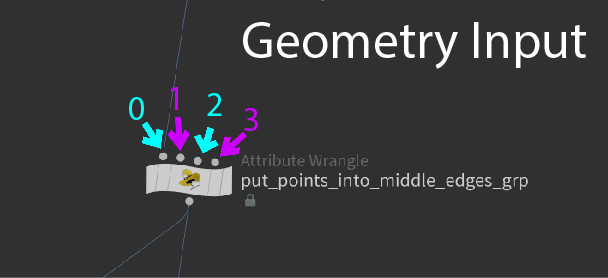Outlining Geometry with Unshared Edges in Houdini
Outlining geometry with unshared edges. Explanation of how Houdini references edges using points.
RBD vs Bullet Solver in Houdini
Bullet Solver vs RBD Solver, comparison between the two and how to choose between the two. The Rigid Body solver has the option to choose between using the Bullet solver engine or RBD solver engine to calculate the dynamics of the simulation.
Coloring Points vs Primitives in Houdini
So what happens if a color is assigned to the points instead of the primitives? What is the difference between assigning color to points versus assigning color to primitives? Sometimes we experience color bleeding onto other primitives of the geometry, this article explains why.
Vellum Simulation (cloth sim) in Houdini
Demonstration of different types of Vellum sims, along with corresponding Houdini files.
Delay Sim on Frame with Houdini Expressions
In this post, I’ll demonstrate how to delay the effect for a simulation inside the SOP Solver. This technique can be used for any other simulation in Houdini and doesn’t have to be limited to the SOP Solver.
Houdini Expressions & Functions
Houdini expressions are functions available to help you calculate values in the parameters of the nodes. You may have seen $HIPNAME which returns the name of the current hip file. Or the centroid one that I use most often for procedural modeling, $CEX $CEY $CEZ, which returns the centroid vector component.
Disintegration & Growth Effect in Houdini
Using a simple technique to produce Disintegration and Growth effects in Houdini. I then add a variation at the end of the effect to generate a variation of the disintegration effect.
Output Terrain Texture Maps (Houdini Height Fields)
How to generate texture maps for terrains generated from Height Fields in Houdini
SOP Solver in Houdini
If you want something to grow over time or maybe shrink over time, SOP Solvers make it easy. SOP Solvers are perfect for animations where you have an object evolving over time, from frame to frame.
SDF used to Deform Geometry
Building upon that collision detection, we can also use the SDF to deform the object upon the collision. Using the SDF value and some math, the grid can be deformed to create footprints stamped on by the Torus.
SDF (Signed Distance Field) used to Detect Overlapping Objects
SDF is short for signed distance field and describes the interior volume of an object. How thick an object is from the middle to the surface? How deep does the cylinder extend? From any point inside an object, using the SDF, it is possible to easily grab the distance to the surface of the object in order to know the depth.
Sine Wave Animated Motion
Step by step mathematical explanation of the Sine Wave function and how it’s used in defining motion. Increasing the frequency and increasing the amplitude and flipping the entire curve function.
Loops in Houdini vs Coding
Javascript vs Houdini. Demo of Javascript code of a simple 2D Version of a Houdini Foreach Loop scene that eats away at a cube. This is a quick demonstration of how coding line by line is different from the nodes in Houdini, but similar because they are derived from the same concepts.
Modeling Thickness & Hollow Interior using Procedural Workflow in Houdini
I demonstrate how to use a procedural workflow to create a bottle geometry from scratch. This project finishes off from the previous project and makes it more complete by hollowing out the interior of the bottle geometry and adds thickness to the edges. And also still using a procedural workflow.
Procedural Modeling in Houdini
Procedural Modeling has infinite possible ways of doing things, and the way Houdini does its point number assignment makes it very convenient to write VEX code to automate things. Using VEX into your procedural modeling workflow is a huge advantage.
Export Height Fields to UE4
This post will go over some tips on how to export the Height Field terrain as an HDA (Houdini Digital Asset) and import it into Unreal Engine as a playable environment or game asset.
Tunnel Building for Height Field Terrains in Houdini
Houdini’s Height Fields provides a simple and fast way of building complex landscape geometry, but what if I wanted to hull out areas in the terrain to make a tunnel? Cave? Secret underground path for a game?
Manipulate Height Fields with Volume VOP's in Houdini
Volume VOP’s (visual operators) are extremely powerful! Volume VOP’s like any other VOP nodes in Houdini is multi-threaded and all operations are run in parallel utilizing all the cores in your computer. Fast and flexible, who could ask for more?
PointVOP Basics in Houdini
Everything inside a VOP (visual operators) node is multi-threaded and makes use of the multiple cores in your computer. You are given a wide range of attributes that inherit the values from the connected parent node, which can then be used for further manipulation inside the Point VOP node.
Math behind the Mask by Feature Ramp Remapped Values
This is an explanation of the math behind how the Height Ramp in the Height Field Mask by Feature node in Houdini is calculated.




















